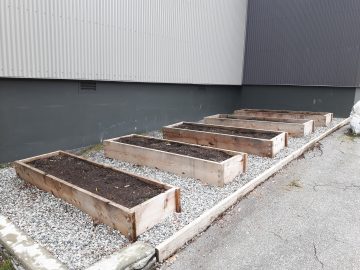Connect & Wonder by Chris Rich

Connect
For me, my passion for and connection with food begins early on in life, watching my Grandmother cook the food we loved as a family. Beginning with the lick of a spoon and the interest in spending time in the kitchen learning alongside my “Gramma”, as I called her, my relationship with food has been growing and evolving for some time. As an adult, with a love of the process of cooking/creating with fresh beautiful ingredients, I have found that I’ve become, in recent years, very interested in where my food comes from, the processes of how and where it was grown, and how I might connect my passion for creatively working with/playing with/cooking with these foods to the entire process. To start from scratch, and more specifically in relation to gardening, to cook the food I grow. So how do I do that?
Wonder
- What kind of soil is best for a school garden (plots/boxes)?
- Where do I get that soil?
- How do I/we care for that soil between growing seasons?
- What do we plant?
- Should I plant from seed or start with seedlings/young plants?
- How long will it take to grow said plants, and what plants might best fit into the school calendar in order to make the most of the experience for the kids?
- How much will it cost to fund a school garden?
- How might I share the learning potential/opportunities of the garden with school’s other educators in order to engage the whole school in the process?
- How will we define a “successful” garden?
- How will I authentically integrate the First Peoples Principals throughout the process and the learning?
What is a Garden?
A student’s perspective…
Having spent some time mulling over the idea of a garden and what the school garden might mean to me, I wanted to touch base with my student Clare (Grade 3) who has essentially been left as caretaker of the school garden by her older sister and see what her hopes were for the garden and what she was hoping to do with her “Garden Club” in the coming months. It was interesting to see that many of her thoughts and feelings about the garden aligned with many of the ideas that we had discussed on our first day at the farm. In short form, here are some of her thoughts:
- “bring people together”
- “Something fun to do as a group”
- “Get kids involved in something good”
- “Make new friends”
- “Something to do with others all year”
- “Learn about plants and gardening”
- “Eat the food we grow”
Needless to say, she’s obviously a rather thoughtful 9 year old, and perhaps older and wiser than her years might indicate, but what stands out for me is that even at nine, she quickly made the connection to community and the positive impact of learning and bringing others together in the process.A good place to start, I think.